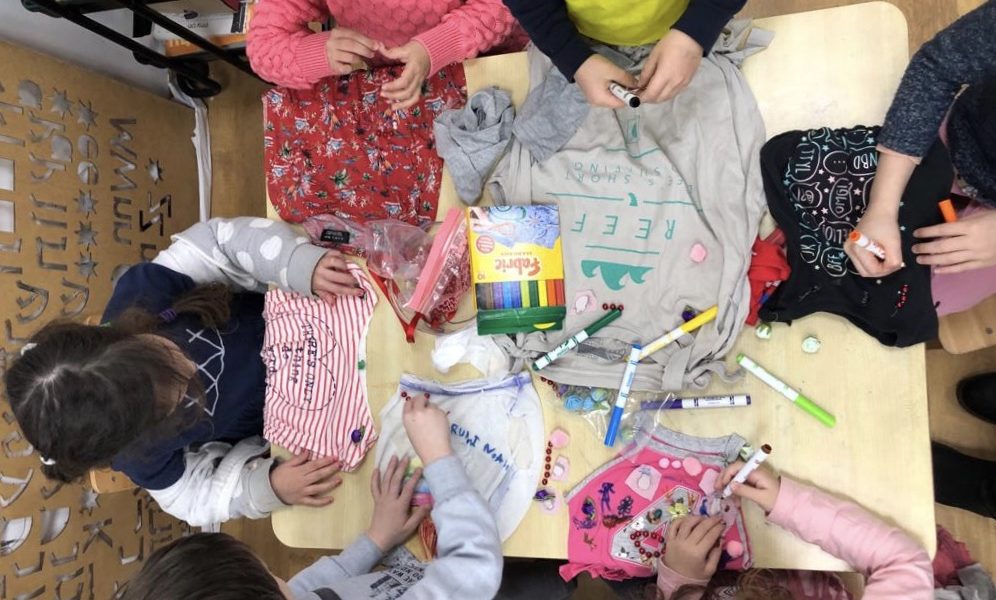ALL CHILDREN ARE ARTISTS by Ori Lenkinski

*originally published in Hebrew in Haaretz
“You need to decide if your child fits this school. If they are artists, they will thrive here. If they are kids who like to draw or dance but don’t NEED to do art, they will suffer here.”
This was the message given to a few hundred parents attending an open day at the arts elementary school in Tel Aviv. Crowded into the campus’ deluxe library one Friday morning in January, prospective parents were given the run-down of the school’s educational philosophy in order to decide whether or not to attempt to matriculate.
Over and again, the staff informed the parents that the children who belonged at their school were the real artists. “We aren’t using art to educate here, we are educating artists,” was another quote that stuck with me.
Until recently, the school held audition/workshops to single out the 68 children best suited to enter first grade. Two years ago, this was replaced by a lottery. During the open day, it was explained that this change put the responsibility in the parents’ hands. We had to decide whether our children were “artists” or “kids that like to do art.”
I sat there thinking, “how do I know if my kid is an artist?”
She’s five.
Did I know, at five, that I would be an artist? I remember deciding to be a cabbage, a songbird, an accountant, a diplomat and about a hundred other things before realizing that I had to pursue dance.
Looking around my daughter’s kindergarten classroom, the sheer presence of art strikes me. Every surface in the room is covered with shocks of color from seventeen small artists’ creations. From paintings to sculpture to photography, these kids produce huge quantities of art every day. They put on plays, make dances, choreograph circus routines, compose songs… their kindergarten is basically an artist-in-residence space for budding visionaries.
Fridge space is a sought-after commodity in our home and only very select pictures win a coveted magnet (even those are rotated almost weekly).
Before hitting first grade, most kids don’t read and write, at least not proficiently, they haven’t been exposed to mathematics or science, they don’t study history. They aren’t even really familiar with athletics. Their options for expression lie in the territories covered by art. Through the arts they are able to experiment with emotion, color, context, subtext and even violence. It is their voice in the world.
Older children learn to specialize in different fields and often, their artistic interest wains accordingly. Doodling gets replaced by scrawling stories, pictures replaced by blueprints or intricate designs, dance by debate. Their options for articulation diversify and the number of artists among them drops.
But the smaller kids, the ones who, at the age of five, need to be siphoned off into different schools where they will meet the educational system head on, need art. It is their tool to discover themselves, to learn from one another, to absorb and interpret their surroundings.
In the wise words of one great artist, Pablo Picasso, “all children are artists. The problem is how to remain an artist once he grows up.”
I differ from Picasso in the value assessment that places a life as an artist above the other options. I don’t mind if my daughter becomes an artist or not. If I could choose a path for her, I would go for one that leads to happiness and fulfillment, regardless of the vocation entailed.
And when faced with the choice of whether to proclaim her “an artist” at the age of five, I find myself deferent. I will not put a label on her. I will not attempt to nudge her in the direction of one field or another. Even if I wanted to, I know it would be in vain.
The biggest challenge, the most exciting and terrifying thing about being her mother is the acknowledgement that I don’t know and can’t control who or what she will be.
